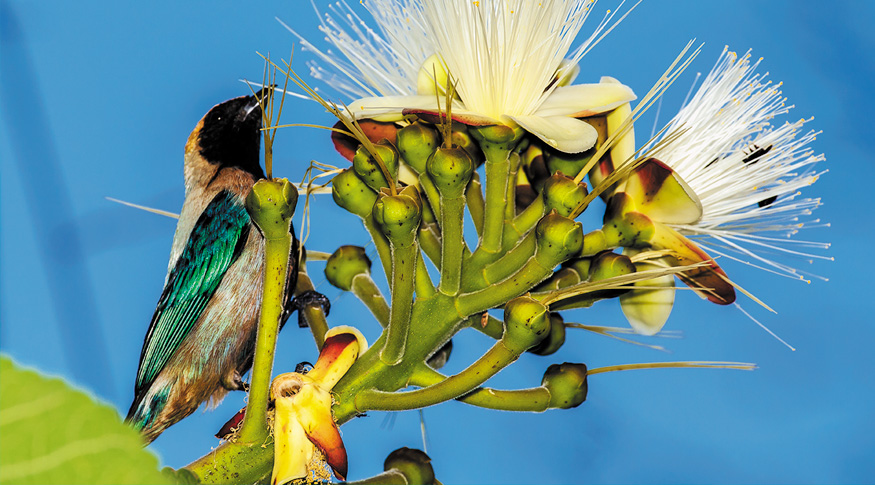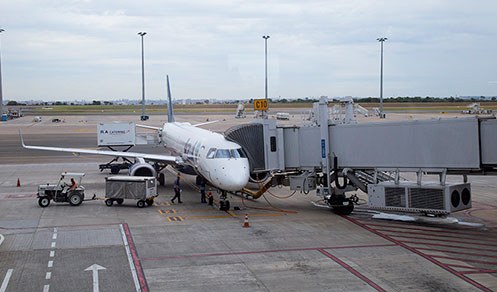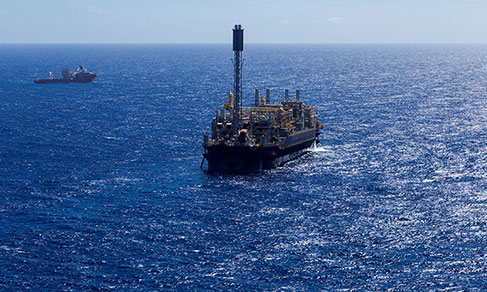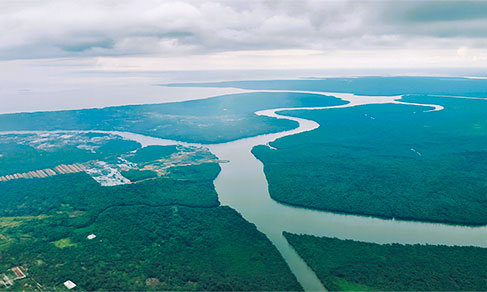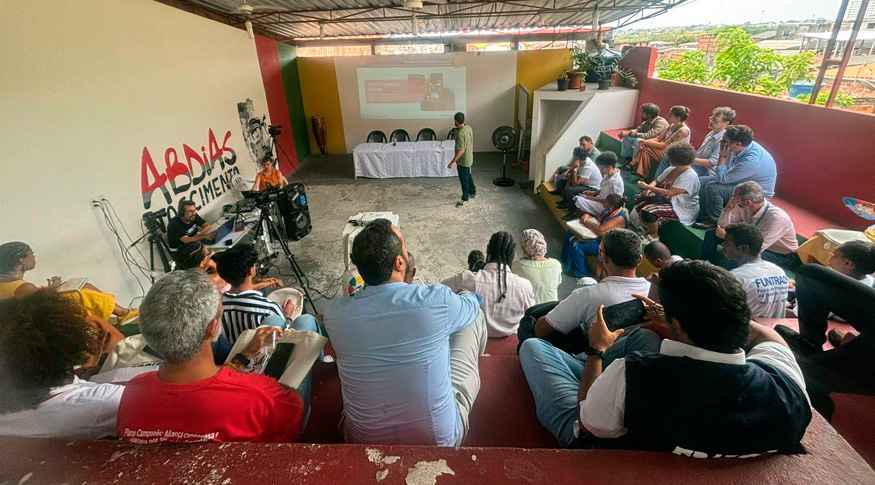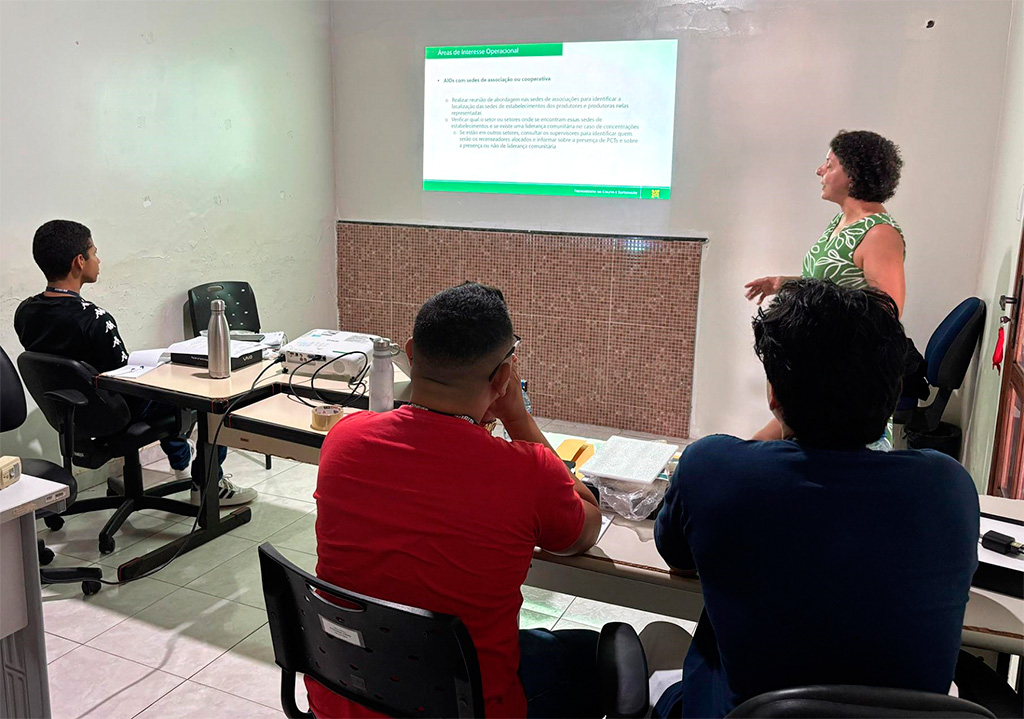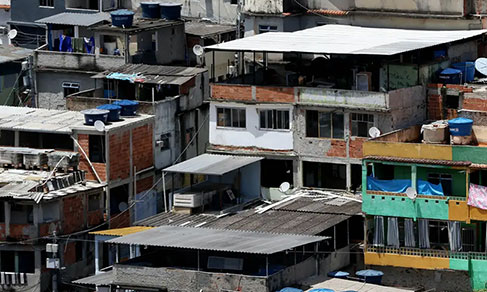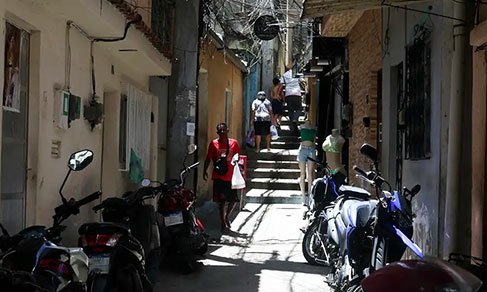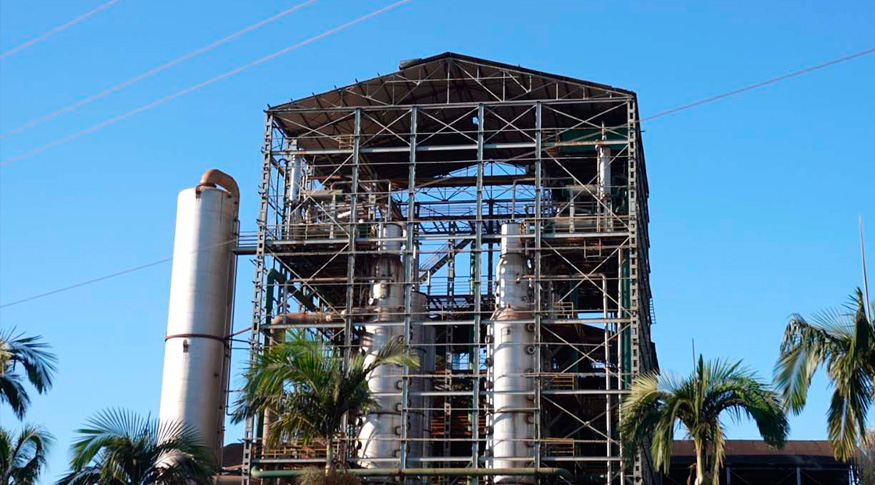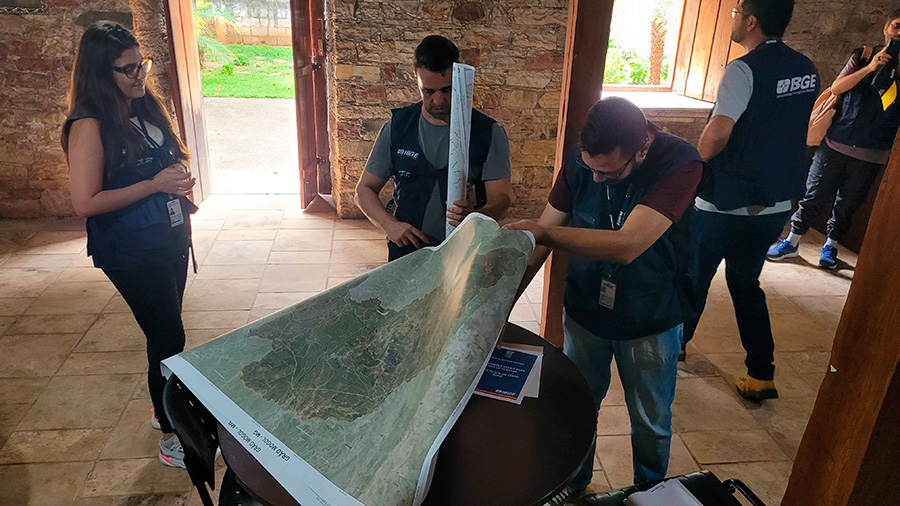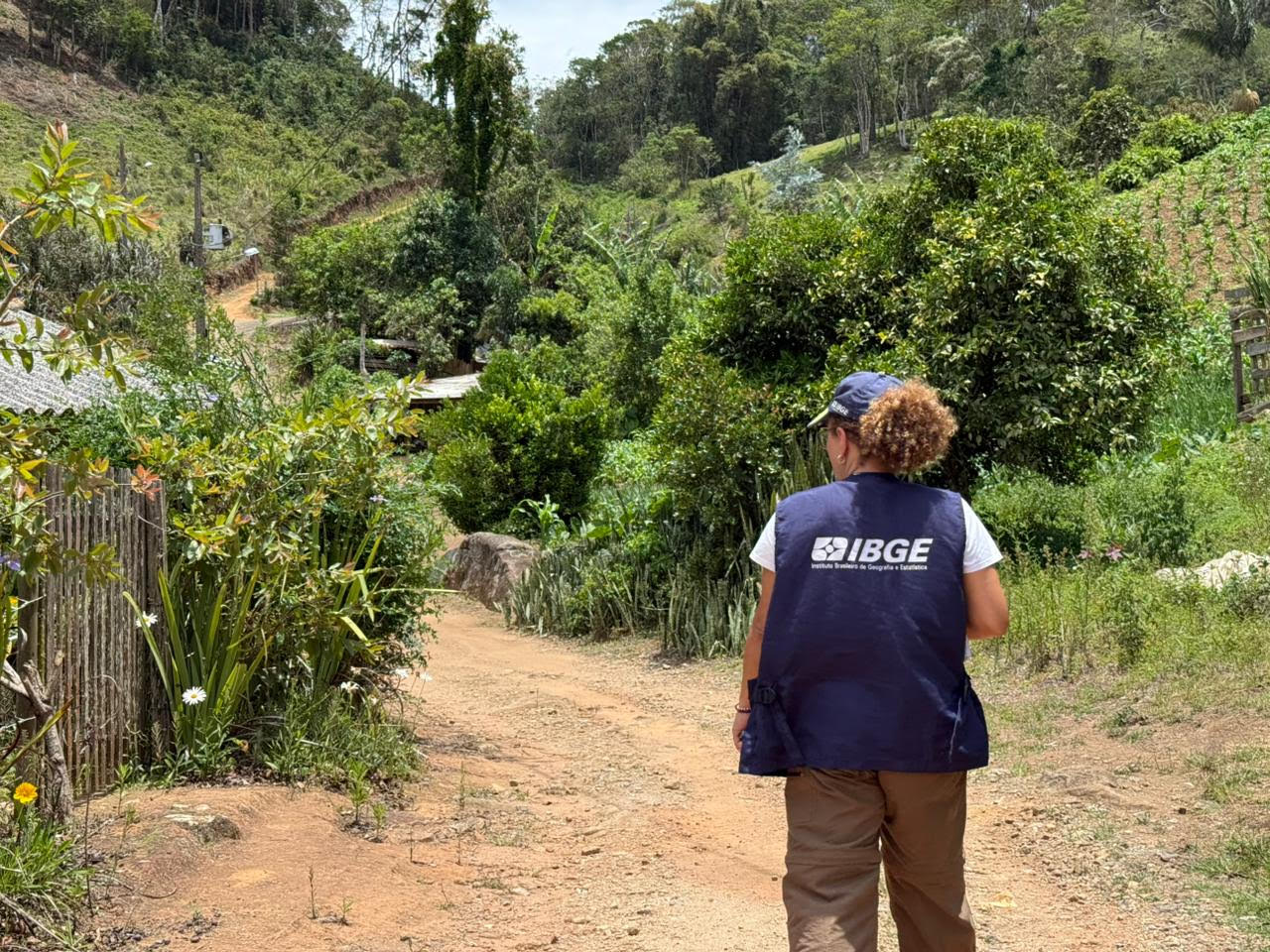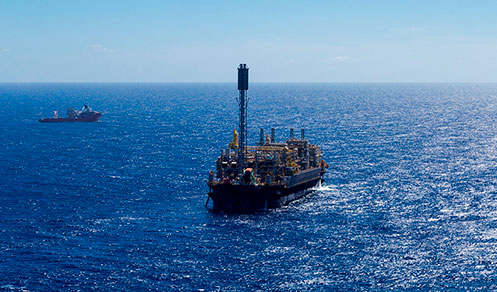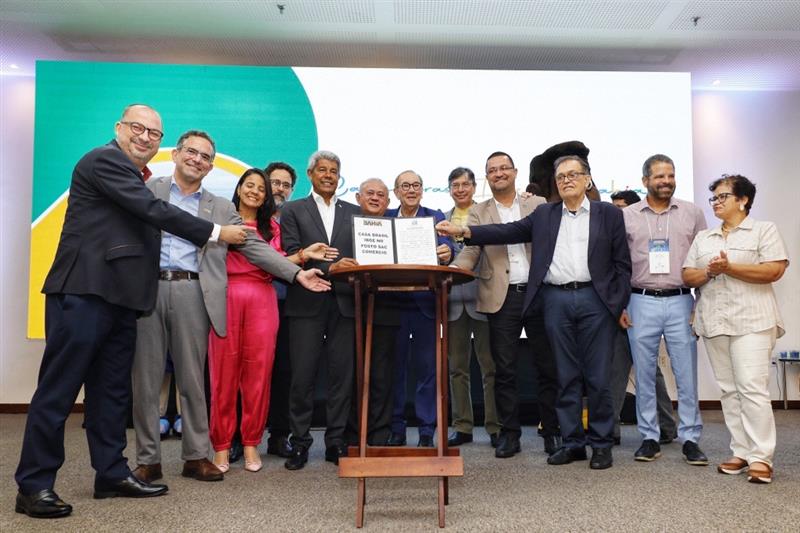PAM
2024 PAM: With grain prices and crops down, value of agricultural production falls for the second year in a row
September 11, 2025 10h00 AM | Last Updated: September 15, 2025 01h14 PM
Highlights
- In 2024, the production value of the country's main agricultural crops fell 3.9% compared to 2023, reaching R$783.2 billion;
- Grain crops, in turn, reached 292.5 million tonnes, a 7.5% drop compared to the previous year. The production value of this group fell 17.9%, totaling R$431.2 billion;
- The country's planted area, considering all 64 crops surveyed, totaled 97.3 million hectares, an increase of 1.1 million hectares, or 1.2%;
- Mato Grosso, the leader among the states, saw a 21.3% decline in agricultural production value, reducing its national share to 15.4%; Sorriso (MT) remains the largest producer of grains, mainly soybeans, corn, and cotton, and had the highest production value among the municipalities, accounting for 0.9% of the total national agricultural production value in 2024.
- The soybean crop saw a 25.4% drop in production value, an 8.1% drop in average yield, and a 5.0% drop in production, totaling 144.5 million tonnes;
- Corn crop saw 115.0 million tonnes harvested, a 12.9% drop compared to 2023. Production value fell 13.5%, totaling R$88.1 billion; Sugarcane crop totaled 759.7 million tonnes (a 2.9% decrease), remaining in second place in terms of production value, with R$105.0 billion (a 3.0% increase).
- Cotton production again reached a record high, with a 13.7% increase in production volume, totaling 8.5 million tonnes. The production value was R$31.3 billion, an increase of 4.3%.
- Rice production increased 3.8% to 10.7 million tonnes, and coffee production reached 3.4 million tonnes (a 1.2% increase). In terms of production value, they totaled R$22.3 billion and R$69.2 billion, respectively, increases of 25.7% and 58.1%. Fruits generated R$91.5 billion in production value, an increase of 21.0% compared to the previous year, with highlights for oranges, bananas and grapes.
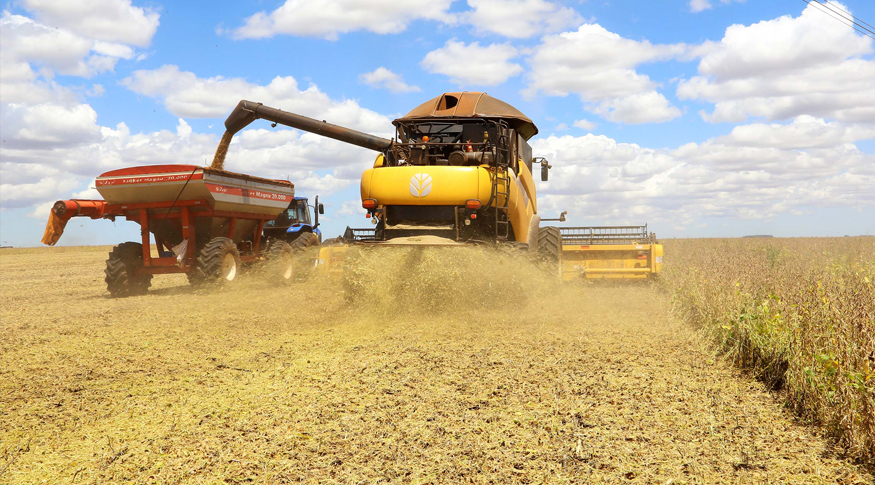
In 2024, the production value of the country's main agricultural crops fell 3.9% compared to 2023, reaching R$783.2 billion. This is the second consecutive year of decline, reflecting a 7.5% decrease in grain production, which totaled 292.5 million tonnes, and in the production value of this group, which fell 17.9% to R$431.2 billion. Soybeans and corn, which account for almost 88.7% of grain production, were the most affected crops by adverse weather conditions and falling prices, influencing the agricultural sector's results in 2024.
The country's planted area, considering all crops surveyed, totaled 97.3 million hectares in 2024. This represents an increase of 1.1 million hectares, or 1.2% more than the previous year, maintaining the growth observed over recent years. Among the products gaining more space in the field, soybeans stand out with an increase of 1.8 million hectares in cultivated area, followed by cotton, with an increase of 280.8 thousand hectares. On the other hand, there was a 4.9% decrease in the area cultivated with corn. The harvested area also continues to grow, with a 0.8% increase, totaling 96.5 million hectares. Data are from Municipal Agricultural Production and were released this Thursday (11) by the IBGE.
According to survey supervisor Winicius Wagner, crops suffered from the climatic impact of El Niño. "The El Niño phenomenon harmed summer crops in 2024. It caused a severe, prolonged drought in regions such as the Center-North, Southeast, and part of Paraná. Soybean and corn, in particular, suffered production declines of 5.0% and 12.9%, respectively, and the decline in their prices impacted the value of agricultural production," he comments.
In the production value ranking, the top five products remain soybeans, sugarcane, corn, coffee, and cotton. Sugarcane, which moved to second place, swapped places with corn, which now occupies third place. The results varied when comparing 2023 and 2024: soybeans (-25.4%), sugarcane (3.0%), corn (-13.5%), coffee (58.1%), and cotton (4.3%).
Even with a 25.4% drop in production value in 2024, soybeans remained the main contributor in terms of value generated in Brazilian agriculture, representing approximately one-third of total national production and maintaining Brazil as the largest global producer and exporter of the product. The growth in the value of sugarcane was driven by rising prices, particularly for ethanol.
Among the positive contributions to production value, coffee, cocoa, and rice stand out, driven primarily by the increase in the prices of these commodities. Coffee saw a 58.1% increase in production value, totaling R$69.2 billion, becoming the second-largest agricultural product in terms of export revenue in 2024. Rice saw a 3.8% increase in production volume and a 25.7% increase in production value, ranking seventh in terms of production value. Cocoa, with a substantial increase in the commodity's price on the international market, jumped 229.4% in annual production value, rising to tenth place.
Despite the decline, Mato Grosso leads production value ranking
Leading among the Federation Units, Mato Grosso saw a 21.3% decline in agricultural production value, totaling R$120.8 billion, reducing its national share to 15.4%. The state is the leading producer of soybeans and corn, crops that saw a decline in production and prices in 2024.
São Paulo remains in second place, showing a 4.9% increase in production value. The state is the leader in orange production, which saw a 43.7% increase in production value, and the second-largest producer of Arabica coffee, with an 87.2% increase in production value.
Minas Gerais, the largest coffee producer in the country, moved to third place in production value in 2024, totaling R$86.6 billion, a 6.9% increase.
Rio Grande do Sul, the largest national producer of rice and wheat, saw growth of 21.1%, generating R$75.7 billion, even after suffering from excessive rainfall in the first half of the year. The recovery compared to 2023 came mainly from soybean and rice production.
Paraná, with significant losses in grain production due to climate issues, saw a 20.3% annual decline in production value, falling from third place in 2023 to fifth place in 2024.
With a decline in the production of soybeans, sugarcane, and corn, its main agricultural products, Goiás also saw a reduced production value, which represented 7.7% of the total national production value.
Sorrento (MT) records highest production value for the sixth consecutive year
The highest agricultural production value, for the sixth consecutive year, was recorded in Sorriso (MT), which alone accounted for 0.9% of the national total.
With a significant presence in the grain sector, Sorriso stood out as the third municipality with the highest value generated from soybean production (R$3.3 billion), first in corn production value (R$2.4 billion), sixth in cotton production value (R$1.3 billion), and fourth in bean production value (R$195.7 million).
São Desidério (BA), with R$6.6 billion, and Sapezal (MT), with R$5.9 billion, ranked second and third, respectively, with strong participation in soybeans and cotton.
The top 10 municipalities in agricultural production values in 2024 generated R$52.4 billion, accounting for 6.7% of the country's total. Of this list, with the exception of Cristalina, in Goiás, all showed a decline in production value. Six of them are in Mato Grosso, while Bahia and Goiás each have two municipalities.
Planting delays and unfavorable weather affect soybean productivity
The 2024 soybean crop reached 144.5 million tonnes, a 5.0% decrease compared to the previous year. Despite a 4.0% expansion in planted area, totaling 46.2 million hectares, the national average yield was 8.1% lower than the previous year. However, soybeans remained the most prominent agricultural product surveyed, accounting for 33.2% of the total production value.
"Extreme weather factors, such as prolonged droughts, delayed planting in the Central-West and Paraná, and excessive rainfall in Rio Grande do Sul, compromised crop development, resulting in a significant drop in the national average yield," explains Mr. Wagner.
Mato Grosso, with a 13.6% decrease in harvested volume this year, remains the largest national soybean producer, with 38.4 million tonnes. This volume generated R$63.8 billion, representing a 35.5% annual drop in the value of soybean production. Among municipalities, São Desidério (BA) leads soybean production, with 2.1 million tonnes and a production value of R$3.7 billion.
In international trade, with the reduced supply of the product on the market and the lower value of the commodity, Brazilian soybean exports saw a 3.0% decline in export volume, totaling 98.8 million tonnes, according to data from the Secretariat of Foreign Trade (Secex). Despite a 19.3% drop in revenue from soybean exports, soybeans consolidated their position as the agricultural product that generated the most foreign exchange for the country. The largest trading partner continues to be China, the destination for 73.0% of Brazil's soybean exports in 2024.
Reductions in area, productivity, and price drive down corn production value
Corn, in 2024, accounted for 20.4% of the total production value of cereals, legumes, and oilseeds in the country, following a lower-than-expected harvest. There were reductions in planted area, average crop productivity, and commodity prices, resulting in a 12.9% drop in production, totaling 115.0 million tonnes harvested.
Winicius explains that, due to the record 2023 crop and high inventories, commodity prices remained at low levels throughout 2024. "These factors, combined with the decline in production, resulted in a 13.5% decline in production value, which totaled R$88.1 billion," comments the supervisor. "The commodity's price, which had already been falling since 2023, discouraged producers from investing in cultivated areas, replacing them with more profitable and lower-risk crops, such as soybeans and cotton."
There was a 4.9% reduction in the total corn planted area in the country, which totaled 21.4 million hectares, and an 8.2% drop in average yield, due to adverse weather conditions for the first crop in Minas Gerais, Paraná, São Paulo, Santa Catarina, Piauí, and Bahia, and the second crop in Paraná and Goiás.
Even with a 5.6% reduction in annual production, Mato Grosso still accounts for 41.2% of national corn production. The value of production in the state fell 1.0%, reaching R$29.2 billion. Meanwhile, Paraná, the second-largest corn producer, with 15.5 million tonnes, saw a 13.3% drop in production and a 9.5% decline in production value, generating R$13.6 billion.
Among municipalities, Sorriso, in Mato Grosso, once again recorded the highest volume of corn produced in the country, with 3.7 million tonnes, generating R$2.4 billion, followed by Nova Ubiratã, in the same state, with 2.4 million tonnes and R$1.5 billion.
As a result of the decline in national production, in 2024, there was a decline in Brazilian corn exports, which, according to Secex data, reached 39.8 million tonnes, a 28.8% reduction compared to the previous period. As a result, Brazil lost its position as the world's largest corn exporter to the United States.
Weather harms sugarcane crops, but prices boost production value
The 2024 sugarcane crop saw a decline in productivity due to the weather and fires in sugarcane fields. Production totaled 759.7 million tonnes, a 2.9% decrease compared to the previous crop. However, the product remained in second place in agricultural production value, with R$105 billion, a 3.0% annual increase, mainly due to the appreciation in the price of ethanol and the resulting transfer of costs to sugarcane mills.
As Mr. Wagner explains, the increased domestic demand for ethanol absorbed much of the sugarcane processing, seeking greater profitability, even with increased competition from corn-based ethanol. "As a result, sugar, another commodity derived from sugarcane, saw its price fall on the global market, which also influenced the decline in production volume this year," he adds. "Even so, Secex data indicates a 22.2% increase in exports of the product, which is the leading producer and exporter in the global market.”
The areas dedicated to sugarcane crops, which had been declining over the last decade, expanded again in 2023 and 2024, exceeding 10.1 million hectares. Of this, 66.0% are concentrated in the Southeast Region.
The state of São Paulo, despite a 4.7% drop in production volume, alone accounted for 53.6% of the national production value, totaling R$56.3 billion, followed by Minas Gerais, with R$12.2 billion.
The Central-West region registered a 3.5% increase in planted area, totaling 1.9 million hectares, which produced 153.2 million tonnes, increasing its share to 20.2% of the national total. Among the states, the highlights are Goiás and Mato Grosso do Sul, which rank 3rd and 4th. the largest producers in the country, respectively.
With rising prices and increased production, coffee production value grows 58.1%
In 2024, national coffee production reached 3.4 million tonnes, a 1.2% increase compared to the previous year, mainly due to the increase in Arabica coffee productivity in Espírito Santo and São Paulo. The production value increased by 58.1%, totaling R$69.2 billion.
Of all the coffee produced in the country, almost 2.4 million tonnes were Arabica, which represented 70.7% of the total in 2024. The value of Arabica production was R$51.0 billion, a 54.0% increase compared to 2023.
"In 2024, a positive biennial crop and higher productivity were expected," comments Mr. Wagner. "But the weather did not cooperate, especially for Arabica coffee in Minas Gerais, and the average yield ended falling quite short of expectations. Even so, there was an increase in São Paulo, Espírito Santo, and Rondônia, which mitigated losses in Minas Gerais,” he adds.
Even with a 2.9% drop, Minas Gerais accounted for 69.5% of all Arabica coffee produced in Brazil, totaling 1.7 million tonnes. With prices rising sharply, the value of Arabica coffee production in the state grew 45.0%, generating R$34.7 billion. São Paulo, the second-largest producer of the type, increased annual production by 9.1%, totaling 335,200 tonnes and recording R$8.6 billion in production value, a significant increase of 87.2%.
The volume of Canephora coffee increased by 1.0%, totaling 1.0 million tonnes, generating R$18.2 billion, a 70.9% increase compared to 2023.
Globally, Brazil remained the world's largest producer and exporter of Arabica coffee. commodity. According to data from Secex, exports increased 30.8%, with 2.8 million tonnes of unroasted coffee exported. Revenues generated grew even further, around 55%, reflecting the sharp rise in international prices.
Cotton production breaks record for the second year with expansion of cultivated area
Cotton production reached a record for the second year in a row, with a 13.7% increase in production volume, totaling 8.5 million tonnes of cotton seed. The expansion of cultivated areas was the main driver of the production increase. With an increase of 280,900 hectares in 2024, the harvested area continued to expand, largely replacing areas previously used for the second corn crop. The production value, with a 5.6% increase, was R$31.3 billion. Average yield fell 2.3% in the year, influenced by the weather.
Mato Grosso accounted for 73.5% of national production. The state harvested 6.3 million tonnes in 2024, generating R$22.5 billion (a 10.5% increase in production value). Bahia ranks second, with 1.5 million tonnes produced in the year, generating R$6.4 billion (-11.9%). The municipality of Sapezal, in Mato Grosso, remained as the leading cotton producer in the country, totaling 1.0 million tonnes harvested in 2024, increasing production by 8.9% and generating R$3.6 billion.
In 2024, according to data from Secex, there was a 71.4% increase in the volume of raw cotton exported, totaling 2.8 million tonnes for the year, elevating the country to the position of the largest global exporter of the product, surpassing the United States for the first time.
With rising prices, rice cultivation areas grow
Rice, contrary to recent years, showed growth in cultivation area: 8.9%, corresponding to an increase of 133,600 hectares. As a result, production increased 3.8% to 10.7 million tonnes, driven by growth in Tocantins (28.7%) and Mato Grosso (26.7%).
High prices contributed to a 25.7% increase in production value, estimated at R$22.3 billion, making it the 7th highest value-generating agricultural product in the country. Rio Grande do Sul, which accounted for 66.8% of national production, saw a 0.2% drop in harvested volume, despite a 4.0% increase in the state's harvested area. Production value was R$14.8 billion, representing a 23.5% increase compared to 2023. Santa Catarina, the second-largest producer, also saw a 4.1% drop in the volume produced and growth in value generated, totaling R$2.3 billion, an increase of 9.8%.
Oranges, bananas, and grapes are the fruits with the highest value generation in the country
The survey monitored the production of 21 fruits, which together generated R$91.5 billion in production value. The growth in value generated was 21.0% in 2024 compared to 2023. São Paulo was the state with the highest production value, totaling R$30.0 billion in the year, an increase of 33.8%, mainly reflecting the increase in value generated by orange and grape production.
Brazil stands out globally as the largest producer of orange juice, which totaled 15.7 million tonnes (-11.1%). "The lower productivity was mainly caused by climate problems and greening (a bacterial disease). On the other hand, with the decrease in industrial stocks, there was an increase in the value of the product in the market," explains Mr. Wafgner. As a result, it was the fruit with the highest production value in the country in 2024: nearly R$28.5 billion, a 42.4% increase compared to 2023.
Banana came in second, generating R$16.1 billion in value. São Paulo led production (963,600 tonnes), and Minas Gerais had the highest production value (R$2.5 billion).
Grapes also stood out, surpassing acai berries and now occupying third place among fruits in terms of production value, totaling R$8.3 billion (an increase of 48.5%). Pernambuco accounted for almost half of the production value, with R$4.3 billion, followed by Rio Grande do Sul, with R$1.6 billion.
More about the survey
Municipal Agricultural Production investigates a set of products from the country's temporary and permanent crops, providing information on planted area, area designated for harvest, harvested area, quantity produced, average yield, and average price paid to the producer in the reference year for 64 agricultural products.
The tables, with data for Brazil, Major Regions, Federation Units, Mesoregions, Microregions, and Municipalities, can be accessed through Sidra. Municipal information for each product is only provided based on one hectare of area occupied by the crop and one tonne of production.


